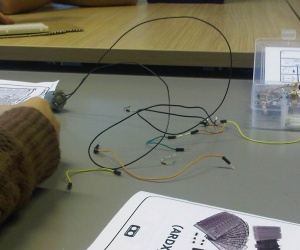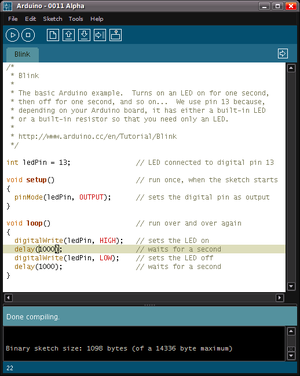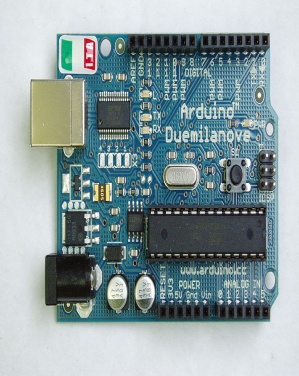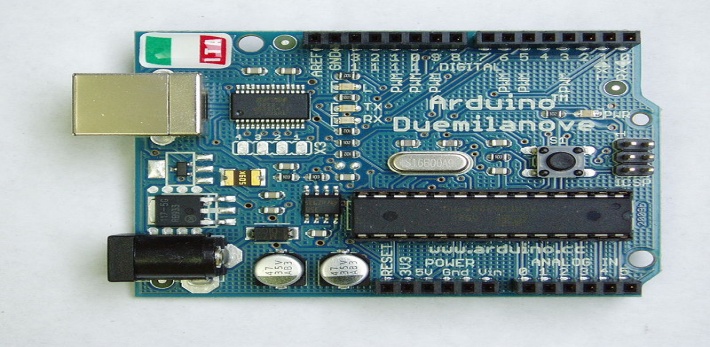Arduino
Arduino is an open source physical computing platform which enables computers to sense and control more of the physical world than a desktop computer can.
Arduino can be used to develop interactive objects, taking inputs from a variety of switches or sensors, and controlling a variety of lights, motors, and other physical outputs. Arduino projects can be stand-alone, or they can be communicate with software running on your computer (e.g. Flash, Processing, MaxMSP.) The boards can be assembled by hand or purchased pre assembled; the open-source IDE can be downloaded for free.
The text of the Arduino getting started guide is licensed under a Creative Commons Attribution-Share Alike 3.0 License.



Arduino was built around the Wiring project of Hernando Barragan. Wiring was Hernando's thesis project at the Interaction Design Institute Ivrea. It was intended to be an electronics version of Processing that used our programming environment and was patterned after the Processing syntax. It was supervised by myself and Massimo Banzi, an Arduino founder. I don't think Arduino would exist without Wiring and I don't think Wiring would exist without Processing. And I know Processing would certainly not exist without Design By Numbers and John Maeda.
We did a workshop where we put together an arduino board by following the manual, this arduino board had a light sensor on it. Working in two groups one group put the board together whilst the other began to write a script in processing in order to react with the board and light up. The group creating the script uploaded it to Pachube and the other group connected the arduino board to the computer. By putting in the url that the other group had we were able to make our light sensor react and light up.
